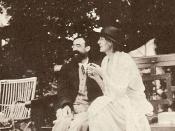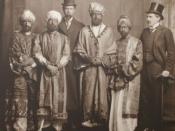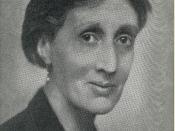Question 8: Gender in Mrs Dalloway and Bliss.
�
I am going to be discussing the similarities and differences between two modernist literary works; I will be using Mrs Dalloway by Virginia Woolf and Bliss by Katherine Mansfield. Bliss was first published in 1920 and Mrs Dalloway closely followed when it was first published in 1925. I chose Woolf and Mansfield because of their differences and because of their similarities, in a few different resources it is said that they were friends, for example, according to John Mepham, Woolf "became a competitive friend of Katherine Mansfield, who was perhaps her closest rival" (1991:56). I will be looking closely at the texts to discover the significance of gender within the texts. Gender "refers to the ways of seeing and representing people and situations based on sex difference" (Lizbeth Goodman 1999:vii), Goodman goes on to define gender as a "social or cultural category, influenced by stereotypes about 'female' and 'male' behaviour that exists in our attitudes and beliefs.
Such beliefs are often said to be 'culturally produced' or 'constructed'" (1999:vii). Freud believed that gender identity is determined by the 'Oedipal Crisis', this is when a child is taken away from the mother, who with which the child is "locked in the phantasy of a passionate love affair" (Minsky 1996:40), in order for the child to gain a gender identity. Whilst discussing gender, I will also touch on sexuality and feminism as they all seem to coincide, Goodman defines sexuality as "the realm of sexual experience and desire - sometimes it refers to a person's sexual orientation (as heterosexual, bisexual or homosexual)" (1999:vii). Virginia Woolf and Katherine Mansfield were both writers in the modernism period; they took on a feminist approach to writing.
Before modernism there was realism, which differed from...


